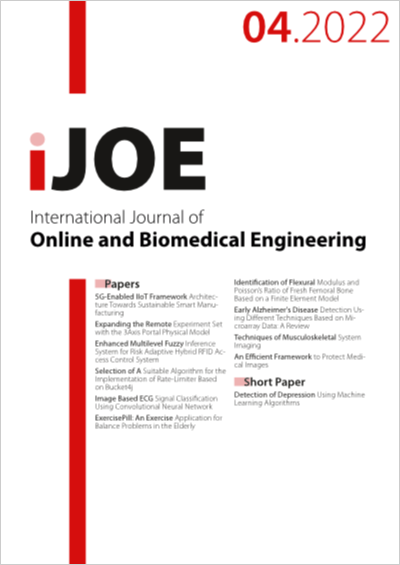Techniques of Musculoskeletal System Imaging
DOI:
https://doi.org/10.3991/ijoe.v18i04.28229Keywords:
Musculoskeletal system, medical imaging, image analysis, MRI, DTI, CT, UltrasoundAbstract
Musculoskeletal models endow an opportunity to study the movement of the upper limb in vivo. The solid foundation of musculoskeletal model design is inherited from musculoskeletal parameters. Some of these parameters are tendon and muscle fiber length, pennation angle, and muscle volume. It is possible to extract these parameters based on cadaver. However, it is time-consuming and gives a generic statement about the function of the musculoskeletal system, but this is not enough to get accurate data and timely for each patient. Medical imaging has revolutionized visualization of the internal structure of the body in real time and in vivo. It is worth using medical imaging because it is impossible to imagine in real time what is inside the body unless surgery is performed; it is possible to see internal structure through cadaver dissection, but not in vivo. There are several kinds of medical imaging tools, which have been used in musculoskeletal system analysis such as Ultrasonography (US), Magnetic Resonance Imaging (MRI), Diffusion Tensor Imaging (DTI) and Computer Tomography (CT) scans. The work proposed aims to present principle, development and challenges of different medical imaging tools of musculoskeletal system methods. The results of this study show that the choice of imaging device for the musculoskeletal system depends mainly on the motivation, target and the strong points that present in the medical imaging devices.
Downloads
Published
How to Cite
Issue
Section
License
Copyright (c) 2022 Jabbar Shaima, Hassan Sh Majdi, Abathar Qahtan Aladi

This work is licensed under a Creative Commons Attribution 4.0 International License.



